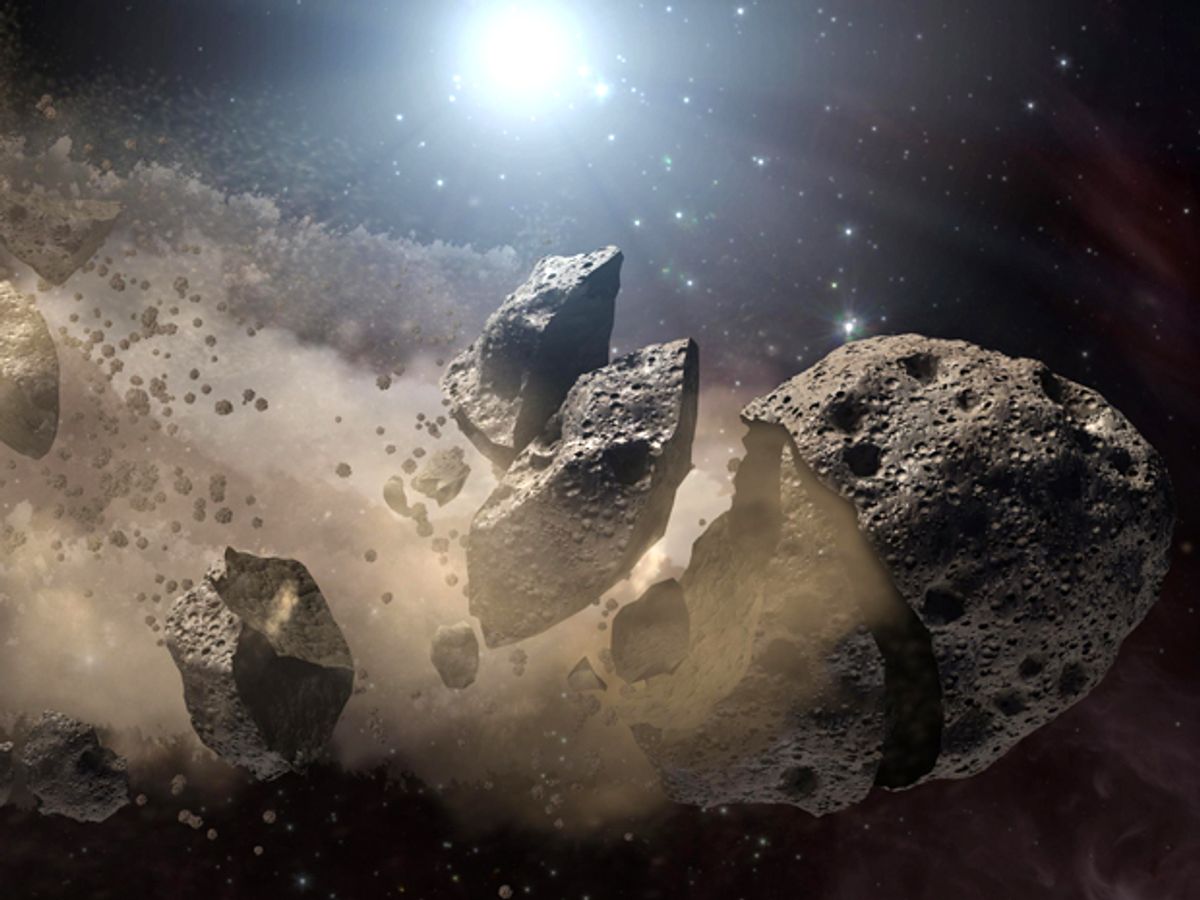Savvy coders can soon help NASA defend Earth against asteroid threats and win some cash prizes in the bargain. The U.S. space agency has joined forces with an asteroid-mining company to recruit programmers who can help identify asteroids in the slew of images taken by ground-based telescopes.
The Asteroid Data Hunter contest scheduled for launch on 17 March will offer a total of US $35 000 over the next six months to anyone with the coding chops to create new asteroid-hunting algorithms. Winning solutions must boost detection sensitivity, minimize false positives, overlook imperfections in the telescope imaging data, and run well on all computer systems. Such efforts could help NASA's sky surveys find even smaller asteroids that still pose a threat to human populations.
"For the past three years, NASA has been learning and advancing the ability to leverage distributed algorithm and coding skills through the NASA Tournament Lab to solve tough problems," said Jason Crusan, NASA Tournament Lab director, in a press release. "We are now applying our experience with algorithm contests to helping protect the planet from asteroid threats through image analysis."
NASA set up the crowd-sourced challenge in partnership with Planetary Resources, an asteroid mining startup backed by Hollywood director James Cameron and Google executives Larry Page and Eric Schmidt. Planetary Resources will help contest participants access NASA-funded sky survey data and also review the contest results. NASA's role includes managing the contest and figuring out how to use winning solutions to improve asteroid survey programs.
Such a partnership provides a possible win-win for both public and private entities. NASA gets to learn more about Near-Earth Objects (NEOs) and track potential threats to Earth, whereas Planetary Resources gets to identify new asteroid mining targets for future missions to harvest space resources.
The new contest is part of NASA's Asteroid Grand Challenge that focuses on finding all asteroid threats to human populations and figuring out how to handle such threats. It also falls under the broader NASA Asteroid Initiative, which includes the U.S. space agency's proposal to send a robotic mission to capture a near-Earth asteroid for closer study.
NASA's asteroid-hunting efforts so far have helped find 95 percent of near-Earth asteroids larger than 1 kilometer within the last 15 years. But the Asteroid Grand Challenge aims to find even smaller asteroids such as the Chelyabinsk meteor that exploded in the atmosphere over Russia last year. Researchers estimate they have found less than 10 percent of asteroids smaller than 300 meters in diameter, and less than 1 percent of objects smaller than 100 meters in diameter.
Jeremy Hsu has been working as a science and technology journalist in New York City since 2008. He has written on subjects as diverse as supercomputing and wearable electronics for IEEE Spectrum. When he’s not trying to wrap his head around the latest quantum computing news for Spectrum, he also contributes to a variety of publications such as Scientific American, Discover, Popular Science, and others. He is a graduate of New York University’s Science, Health & Environmental Reporting Program.



